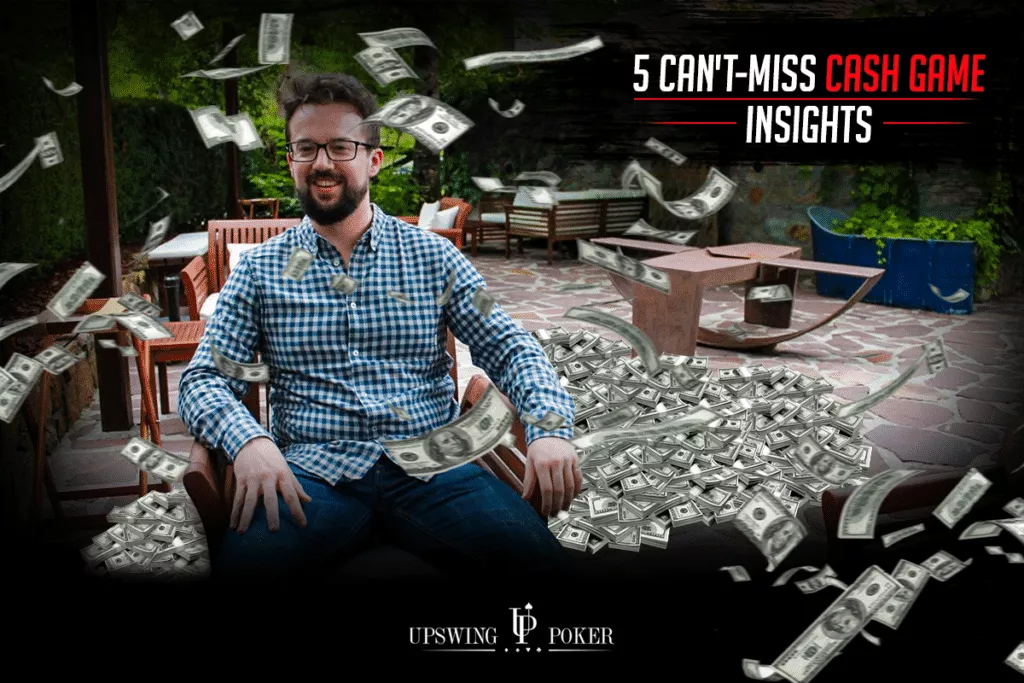
We Lab members are truly fortunate.
We get to watch a top online cash game player, Fried “mynameiskarl” Meulders, play some serious poker, and then we get to pick his brain afterward to further increase the edge we have on our opponents.
But even if you aren’t a Lab member, you’re in luck because you’re about to get 5 valuable insights from one of Fried’s recent Play & Explain sessions.
These will help you play better in multiway pots, understand when it’s correct to bet for protection, and more.
1. Don’t follow HUD stats blindly
One leak many inexperienced players have is over-relying on heads-up display (HUD) stats. Sure, a HUD is an extremely useful tool to gain an edge over your opponents. But HUD stats have their limits.
Fried called a min-raise from the big blind against a UTG open and the action checked through on the A-K-9 flop. This specific opponent folds to probe bets 69% of the time, as highlighted in the image above.
Even though this is an extremely exploitable frequency, it does not mean the UTG player folds 69% of the time on every board. If you think about this specific spot, the UTG player can have many hands that will call a turn probe, as he will naturally check back on the flop with a bunch of A-x and K-x hands. So, even if he normally builds his ranges poorly, in this specific spot he will naturally play pretty well.
In the end, for the reasons just explained, Fried decided to check and fold when the UTG player made a delayed c-bet.
The lesson here is to focus first and foremost on the specific spot, and then, when the decision is close, use the HUD to sway the decision one way or the other.
2. Check a lot when out of position as the preflop raiser in multiway pots
When you open-raise, get a caller, and have to play out of position, you need to check a lot. This happens because the in position caller has a much tighter, stronger range.
In this case, Fried noted that we should check with the stronger A-x hands in our range, such as AQ, even though it might be tempting to bet. With his specific hand (AJo), Fried opted to c-bet small (2.3BB into 7.2BB).
The lesson here is to check stronger hands than you are used to when playing out of position as the preflop raiser.
3. Play straightforward in multiway pots with weak players
Fried’s next insight came during the same hand. As you can see in the graphic above, the SB is tagged with a green color. That means he is a weak player.
Against weaker players, generally speaking, Fried notes that you should deviate from a GTO style by betting thinner for value with fewer bluffs. So, even if we check with the strong A-x against 2 good regs, we would need to bet for thin value with hands like AK, AQ, AT when the weaker player is in the pot.
Simply put, play A-B-C poker in pots with weak players.
4. It’s important to deny equity versus passive opponents
When an opponent has a polarized range, we should play a more binary strategy of calling and folding with very little raising. This is because such an opponent is likely to barrel the next street, which disincentives us from raising our strong hands. Raising with a strong hand would basically let his bluffs off the hook.
But, in practice, this very often isn’t the case. Many of you opponents will bet with a more condensed range (aka merged range). So, how do you think you should adjust versus these players? Click “Show answer” when you’re ready for the answer.
The action went as follows: Fried raised from UTG and both the SB and BB called. He then c-bet on the flop, the SB called and the BB raised. Fried called the raise, and was then faced with a roughly two-thirds pot sized bet on the turn.
At first you might be tempted to just call, here, since you are in a way ahead-or-way behind situation.
But, if you think your opponent won’t follow through with many bluffs on the river, then by calling you are just letting his draws and worse value hands realize their equity with no upside.
Consequently, the best play here is to raise all-in, which Fried did. The BB responded with a fold.
5. Betting for protection is okay when you expect to get a lot of folds and/or not get raised
When you first start out in poker you learn that medium strength hands should be checked. This is a very solid way of playing these hands. But as you move up through the levels you learn that there are some situations where betting a medium strength hand will make more money than a check.